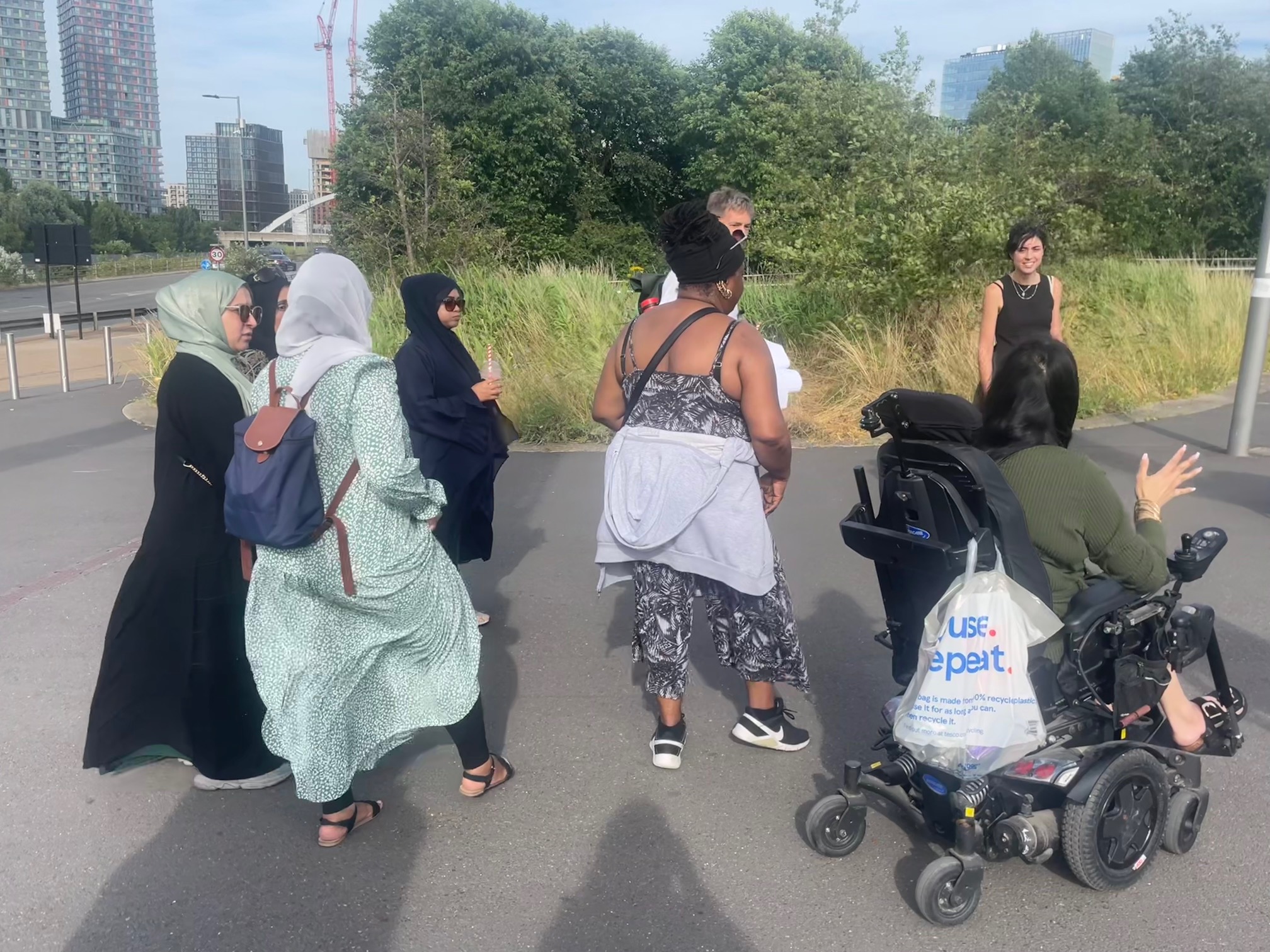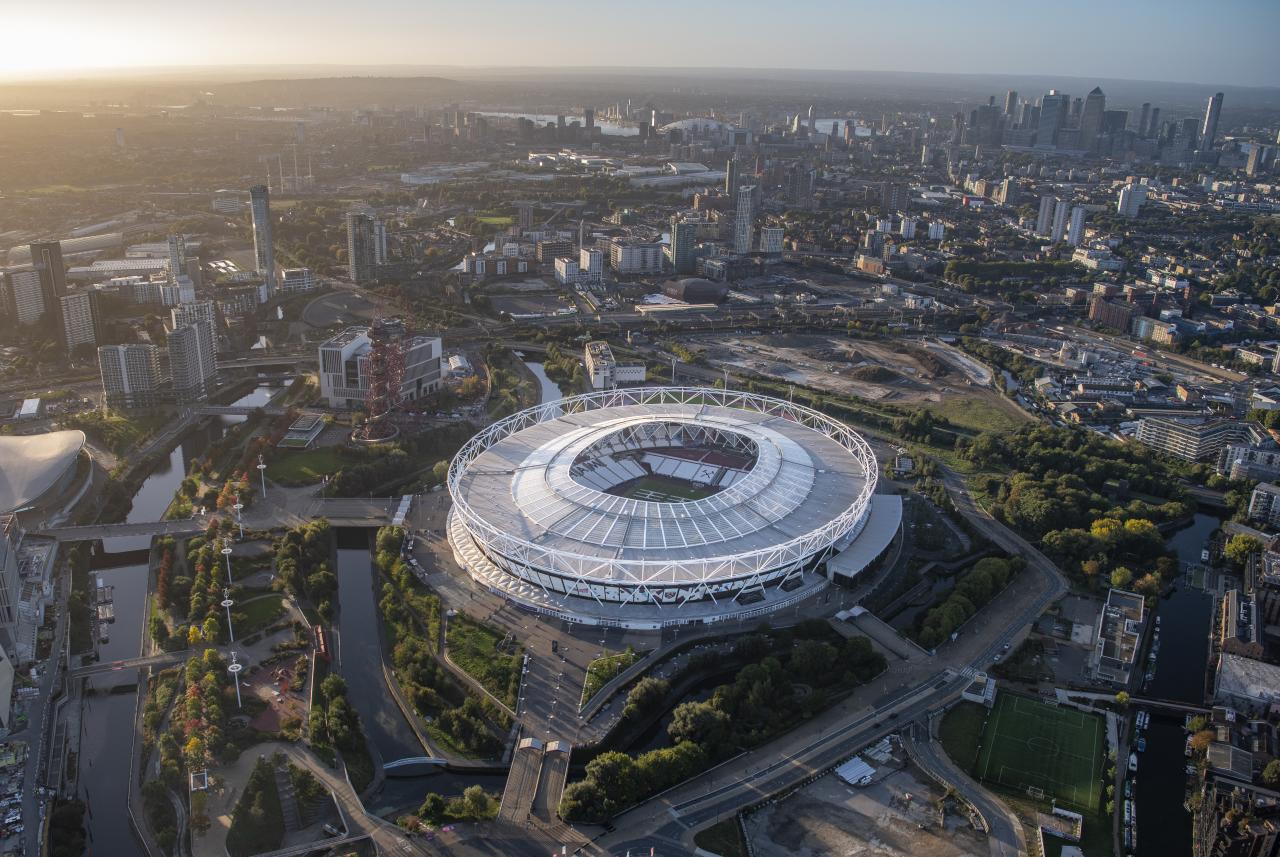Queen Elizabeth Olympic Park has been a fixture of the East London skyline since it was constructed to host the 2012 Summer Olympics and Paralympics. Today, this area is a wellspring for local authorities, urban dwellers and planners to co-design and mingle.
Over the years, the link between planning for the Olympic Games and urban regeneration has been well established. A lot of attention is paid to repurposing or creating new spaces that will not only serve the main event but, ultimately, local urban communities after the Olympic party has left town.
This article follows the local development organisation that manages Queen Elizabeth Olympic Park and acts as a local planning authority for the surrounding area. Faced with concerns about gender equality, we created a step-by-step handbook to help urban planners and administrators in London and other cities design inclusive and equitable spaces.
Integrating gender into the legacy of the Olympics
Inclusivity is essential for building a sustainable future, necessitating a fundamental shift in how we design and plan cities for diverse communities. The bid for the London 2012 Olympic and Paralympic Games was driven by a vision to stimulate the regeneration of East London, an area celebrated for its cultural and ethnic diversity. The legacy of the Games aimed to create enduring positive impacts for local communities, with inclusivity at the heart of the development process.
To realise this vision, the Mayor of London established the London Legacy Development Corporation (LLDC) in 2012. The LLDC was set up to manage the planning and regeneration of Queen Elizabeth Olympic Park and the surrounding area. Creating equal opportunities and ensuring an inclusive and accessible environment were established as fundamental pillars of the organisation.

Despite inclusive design being a central requirement in all decisions and development processes, the traditional approach in the UK, as in many other countries, often narrowly defines inclusivity as addressing disability. This view fails to fully encompass other aspects, including gender. Consequently, this prevents women, girls and anyone who identifies as female—who represent over 51% of the population—from fully benefiting from the investments and opportunities that accompany urban development, adversely affecting the aims of sustainable development.
Since 2021, following heightened media scrutiny of several tragic events, public attention has once again focused on male violence against women. This prompted many organisations, including those within the built environment sector (such as the LLDC), to reassess their approach to addressing gender inequalities.
Gender-equal cities: from policy to practice
UN Women estimates that achieving gender equality in public life will take another 286 years. This is an unacceptable timeframe. To advance at the necessary pace, it is important to break up siloed approaches that undermine collective progress and delay essential change.
Although this is a deeply complex issue extending beyond urban planning, a single sector or organisation, the LLDC made the decision to address gender inequality within its remit. It became the first planning authority and developer in the UK to fully commit to gender-informed urban design and planning. This commitment led to comprehensive three-year research, collecting evidence about the needs and aspirations of local women, girls and female-identifying persons to understand what it takes to create places that truly work for them.
With a lack of clear local practical examples, this process required substantial unlearning and adaptation. It involved rigorous testing and refinement of approaches in live projects. Central to this journey was engaging directly with a diverse group of local women and girls, co-creating research with them to gain deep insights into their lived experiences. The LLDC interacted with over 1 000 people through various participatory methods, including exploratory walks as well as creating new techniques like 'co-clienting' to address issues where co-design methods were insufficient. As an example, in 2023 the LLDC looked at the Waterden Green Play Area, a green public space dedicated to teenagers. Seven young women aged 17-23 helped prepare a design brief to make the space safer and welcoming to girls and young women.
These engagements highlighted key barriers preventing women from participating such as time poverty, sensitivity of the topic, financial limitations and childcare responsibilities, among others. This led to recommendations for improving the approach to participation, including financial compensations, working with professionals such as sociologists, allowing significant time for recruitment, supporting women and addressing common conditioning issues. Significant efforts were invested in follow-ups to maintain and strengthen relationships and build trust.
The work was also shaped by international studies and approaches. To build on this global foundation, the LLDC worked with the global firm Arup and engaged other experts to integrate and adapt existing methods, rather than duplicate efforts. Initial evidence gathering was facilitated by the UN UK Women Safer Space Now. A partnership was also formed with the UN Habitat Her City. Additional contributions came from the City of Umea (SE), organisations like Cities Alliance, and a host of URBACT experts on Gender Equal Cities, which all consolidate best practices providing resources for practitioners and supporting capacity development.

A step-by-step guide for gender-informed urban planning
The LLDC has compiled its wealth of research, knowledge and good practice into a handbook. Creating places that work for Women and Girls: Handbook for Local Authorities, Developers and Designers was officially launched on 11 July 2024 (see video below). The handbook outlines a comprehensive approach to mainstreaming gender-informed principles in urban design and planning. It provides clear steps for local authorities, developers and their design teams.
Achieving gender mainstreaming requires organisational support, emphasising the need for governance-level changes. These changes ensure gender considerations are systemically integrated into every relevant action and actively practised throughout the organisation.
Key recommendations include:
- Establishing clear organisational commitments for implementation of gender-informed processes in all projects and decisions.
- Adopting mechanisms and governance frameworks to ensure continuity of these commitments and their effective delivery.
- Informing decisions, strategies and designs based on a genuine understanding of women’s and girls’ lived experiences through participatory-led approaches. This requires multi-stage data gathering, from evidence-based research to local knowledge acquisition at a project-specific level.
- Adopting a holistic approach, with cross-boundary and cross-sector collaboration with key stakeholders, including education, social services and policing.
- Measuring impact and successes to collect data aiding the identification of lessons learned, patterns, emerging trends and good precedents.
Initial feedback, including positive responses from countries like the Netherlands and Italy, indicates strong demand and utility beyond the UK. Unsurprisingly, the lessons learned, as outlined in the handbook, demonstrate that there is no ‘quick fix’ solution. It is not merely about applying a set of design principles uniformly.
Designing places that work for women, girls and anyone who identifies as female fundamentally requires a long-term commitment and a process-oriented approach. At the heart of this process is genuine engagement through participatory-led methods. The aim is always to find place-specific, community-specific solutions that build on the diverse local knowledge. The process of ‘gender-informed urban design and planning’ also involves adopting planning policies and development procedures to mainstream the process. Previous UK initiatives to tackle gender biases in built environment often failed due to lacking clear implementation mechanisms. To address this, the LLDC specifically used planning tools to ensure sustained implementation and monitoring.
Passing on the torch
By adopting gender-inclusive urban design principles, the built environment professionals take an important role in addressing gender inequality. They can ensure fair access to services and opportunities, thereby advancing the socio-economic mobility of women, girls and anyone who identifies as female. This will not only improve, protect and empower but also unlock the full potential of our cities and individual developments regarding other goals such as climate change mitigation, sustainable development and economic growth.
In December 2024, the LLDC will transition its planning powers to the host boroughs. The transferability of the LLDC’s experiences and the handbook is important to carry on the legacy of the London Olympics. The comprehensive findings have already been presented to the London Assembly, with recommendations to the Mayor of London for the implementation of these processes in the next iteration of the London Strategic Plan. This will extend the LLDC's impact beyond its area, benefiting local communities across London and potentially inspiring national changes by demonstrating effective practices.
In the wake of the Paris 2024 Games, we are excited about the outcomes of the London’s Olympic and Paralympic legacy. We hope to see the principles of gender-informed design and planning embedded and built upon. This will set an example for future Olympics host cities, demonstrating how regeneration led by major events can truly drive innovation and change.
Find out more from URBACT gender experts
Visit the URBACT Knowledge Hub on Gender Equal Cities to get the latest expert takes, policy-making insights and a host of best practices and capacity-building resources.
What if sustainable urban development was an Olympic sport? Take our quiz to test your knowledge!

